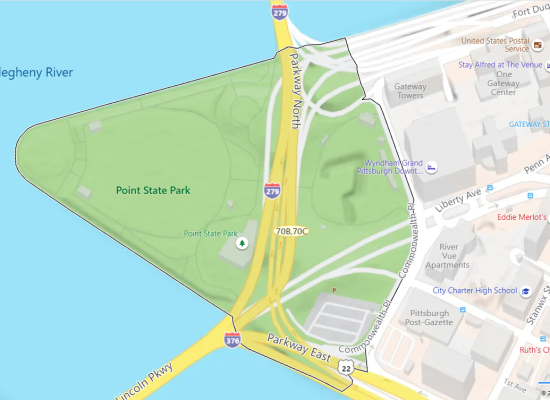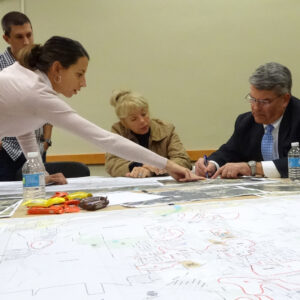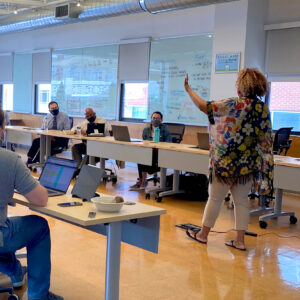Cantini Mosaic Reconceptulization and Relocation Recommendations
Project Overview
The Cantini Mosaic is a public art installation created by Virgil Cantini in 1964, and installed in a pedestrian underpass beneath Bigelow Boulevard near Chatham Street in Pittsburgh’s Central Business District. It consists of 28 abstract sculptural mosaic panels, designed as two sections of 14 panels, made of cast concrete and glass tiles. The panels were intentionally installed in a deliberate order and arrangement for people passing through in either direction. The art piece was commissioned by the Pittsburgh Urban Redevelopment Authority specifically for the pedestrian underpass as a part of the Lower Hill Redevelopment program.
Core Services Performed:
- Visioning Meetings
- Stakeholder Coordination
- Public Outreach & Surveys
- Relocation Research & Recommendations
- Reinstallation Feasibility Study
- Reinstallation Budget Study
Client: City of Pittsburgh, Pennsylvania
Timeline: September 2020 – September 2021
Community Engagement
In 2017, the City of Pittsburgh approved plans for the “Cap” Project (officially named Frankie Pace Park), a new three-acre public space spanning a structure over a portion of the I-579 Crosstown Boulevard. This project was funded by a federal grant given to the City of Pittsburgh and affected the site of the Cantini Mosaic. After a Section 106 consultation process culminated in a determination of eligibility for National Register of Historic Places listing, the a Programmatic Agreement was signed by the City and other parties, requiring the reinstallation of the Mosaic in a new location by the end of 2024.
In April 2019, the Mosaic panels were removed and placed into City storage. Later that year, the tunnel was demolished to begin construction of the Cap. In late 2020 E. Holdings, Inc was engaged by the City of Pittsburgh to facilitate the reconceptualization project.
Our efforts involved working with a group of key stakeholders, representing the Section 106 Consulting Parties, to identify and evaluate potential locations within the City of Pittsburgh that met the established criteria from the Character Defining Features document. Over a six-month time frame, we met with a variety of community organizations and stakeholders, surveyed over 100 interested parties, coordinated multiple site visits, and held a public meeting to collect feedback on proposed locations. The final plan provided a summary of the process, an evaluation matrix of locations, and a detailed analysis of three priority locations. Each of these locations offers conceptual renderings depicting the Mosaic reconceptualized within the space, design intent and style guidelines, lighting considerations, and opinions of probable cost. The City will use this document to guide its next steps in choosing the final location and completing the reinstallation of the Cantini Mosaic in its new home.































